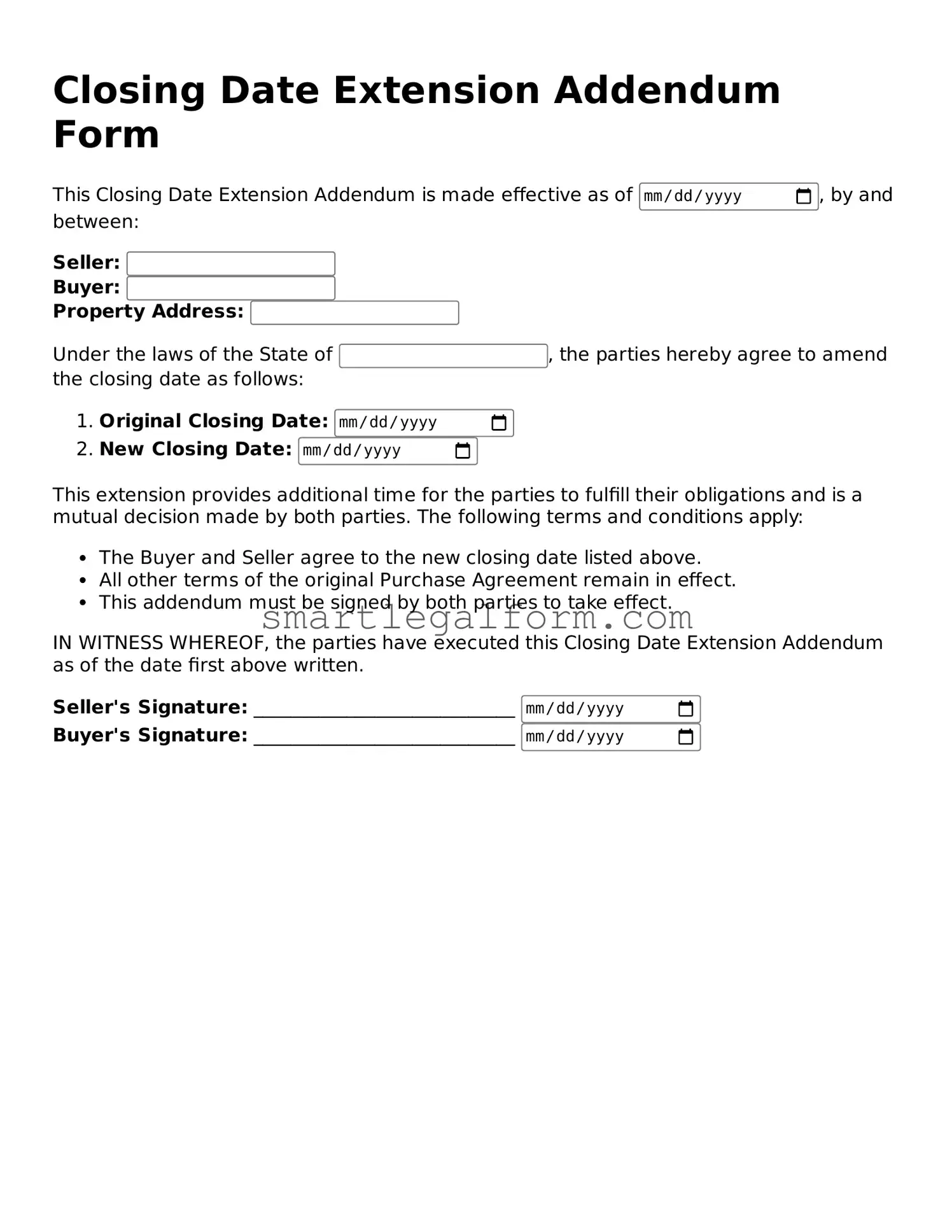Attorney-Approved Closing Date Extension Addendum Form Form
The Closing Date Extension Addendum Form is a document used in real estate transactions to officially extend the closing date agreed upon by both the buyer and seller. This form ensures that all parties are on the same page regarding the new timeline, helping to prevent misunderstandings. If you need to adjust your closing date, consider filling out the form by clicking the button below.
Fill Out Your Form Online
